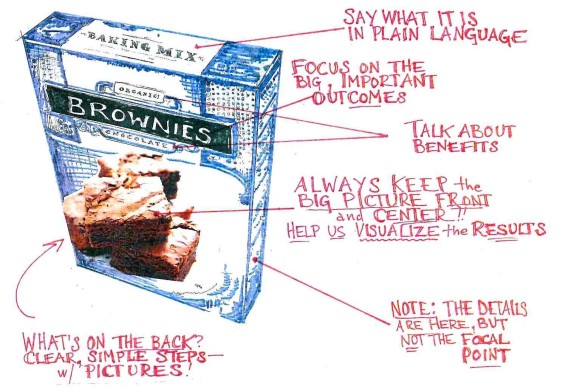We’re policy nerds here. (You may have gathered that.) It means sometimes we know just about every last detail of a particular policy solution. It means we sometimes go a little overboard telling other people about all those details—because we’re excited about the possibilities. (Okay, maybe a lot overboard!)
Most of the other nerds we know do this too. And even quite a few of our non-nerd friends do it. It’s mostly because we are keen on fixing problems.
Of course, knowing the specifics is important for us. We put policy ideas through the wringer for a living. And all the little details are really, majorly, crucial for making any policy work correctly.
But as we’re talking about policy solutions, we sometimes get bogged down in the details. That’s when our audience can miss not only the basics and our enthusiasm, but also the most important thing: The Big Picture.
What people want to know—what they really need to know, in fact—is what good a policy will do and why it matters. In other words, our job is to help them see what it’s going to look like.
Here’s a way to think about it: Imagine yourself standing at the grocery store trying to choose a box of brownie mix. There’s a reason that what you see on the front of every single box is a picture of delicious brownies. Note that the fronts of the boxes do not go into detail about how the leavening agent is activated or how the manufacturer decided on the proportions of chocolate to flour. No! Even the back of the box gives just simple instructions in a few easy steps—with pictures.

We should follow the Brownie Mix Rule when talking about policy: Focus on outcomes. Help people envision the end result.
Here are just a few reasons why this is so important:
- The notion of the dispassionate mind was debunked long ago. The facts and the numbers and the mechanisms are terribly important for designing and implementing good policy, but just about nobody makes decisions about what policy measures to support or reject by rational weighing of evidence and sorting through facts. Cognitive science, neuroscience, political science, psychology, they all say we make most decisions based on our emotional responses—yep, even policy nerds. Focusing on policy outcomes and why they matter for people is not sugar coating things or “dumbing down.” It’s giving people the information they need to make a decision.
- Those of us immersed in the world of public policy often assume that the moral dimensions of these solutions are somehow inherently implied or blatantly obvious. But they’re not. We must name why a certain policy matters to our families and communities for others to get it.
- There’s a time and a place for discussing policy details. But with many audiences who really count, when we’re deep in the weeds, we risk losing interest—and worse: ceding the storyline (what you get) and moral high ground (why it matters) to opponents of our policies. As a wise pollster recently put it: When you’re explaining the details, you’re losing.
NOTE: The brownie box analogy is not my own. It has been handed down over the years by many smart and savvy consultants, messaging trainers, pollsters, and non-profit leaders. The exact origin is unknown to me. Tell us where you first heard it!


Comments are closed.